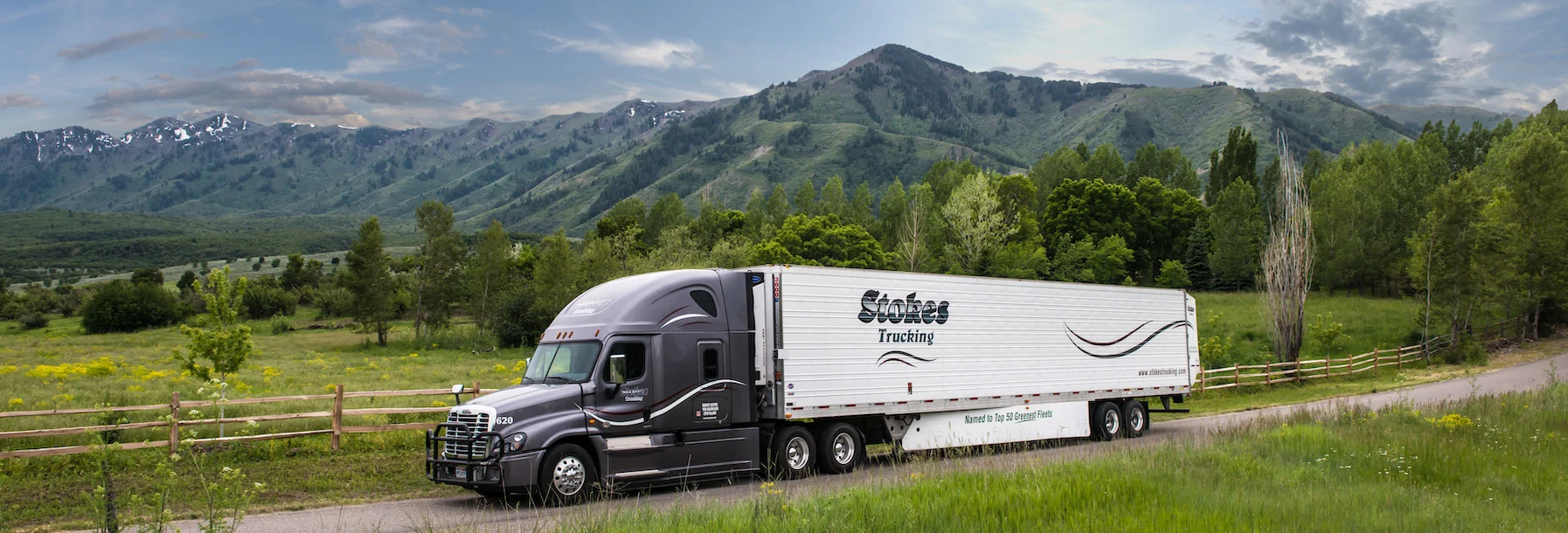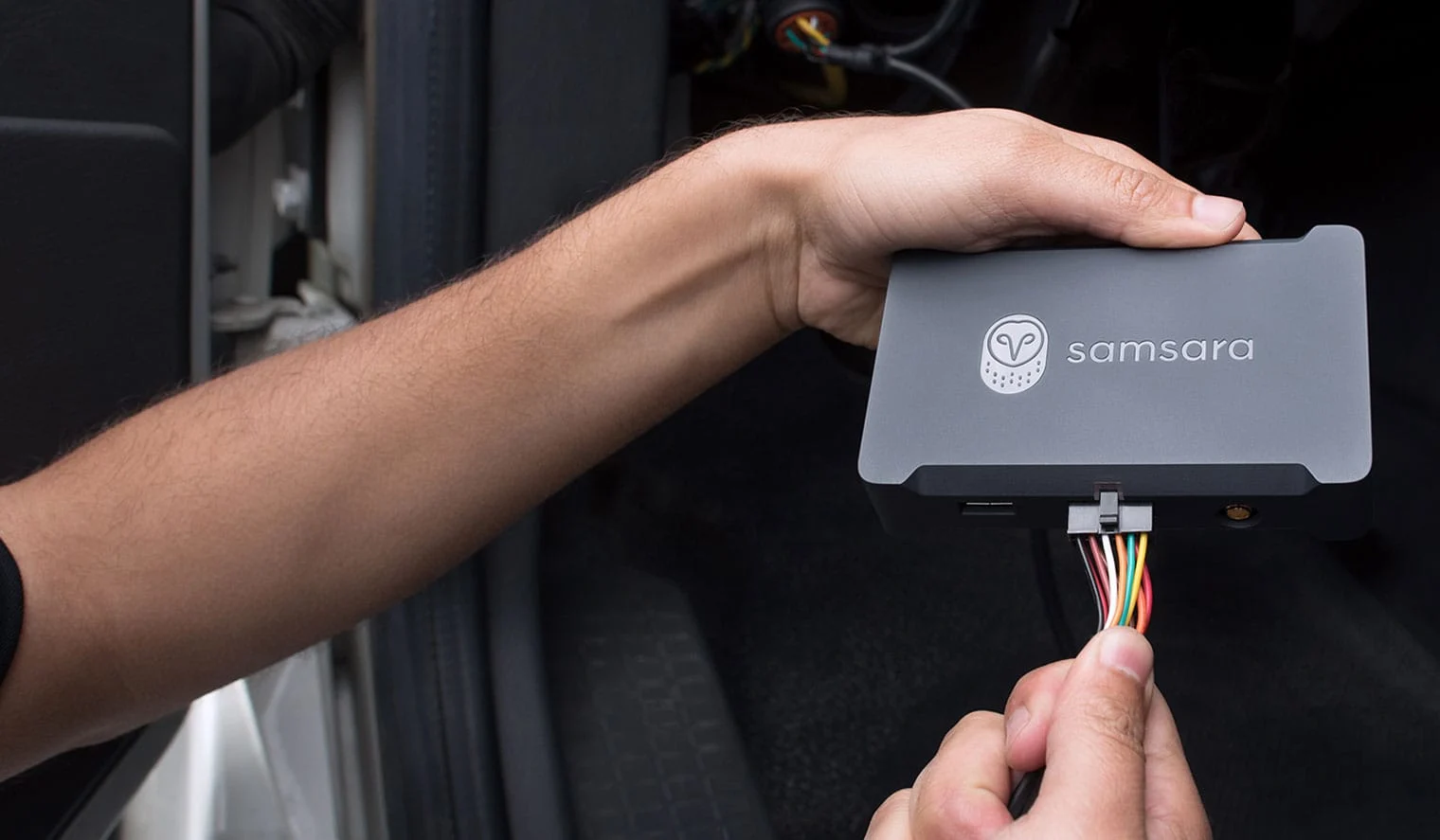
Stokes Trucking improves trailer utilization to save thousands of dollars
"Now, we know where all of our trailers are—we’re not guessing at their location. We don’t have to rely on writing something down and being able to find it and reference it later.”
Tyler Howell, Director of Safety, Stokes Trucking
Utah-based long haul trucking company Stokes Trucking relies on Samsara’s complete platform to increase operational efficiency, maximize revenue per load, and improve driver safety.
Vehicle Gateways provide real-time location data to third-party broker apps via open API integrations, increasing revenue per load and improving customer satisfaction.
Asset Gateways provide down-to-the-second location information for expensive trailers, reduce load loss, and optimize utilization.
Dash cams and in-cab voice coaching provide visibility into on-the-road safety, improve driver behavior, and protect the company from false claims.
Meet Stokes Trucking
Founded as a single less than truckload (LTL) truck operation in 1979, Stokes Trucking has since grown to nearly 50 vehicles and more than 110 trailers, transporting dry and frozen foods, pharmaceuticals, dairy and cheese, and general freight across the contiguous United States. They provide both local and long haul services for more than 75 customers, transporting over 100 loads every week.
For Stokes’ Director of Safety Tyler Howell, efficiency and safety is paramount. In his search for a dash cam provider and a better telematics system, Howell was focused on finding a consolidated platform that could easily integrate with his existing transportation management system (TMS) and supply chain software systems. Ultimately, Howell chose Samsara to maximize trailer utilization, increase revenue, and prevent harsh driving events.
Improving safety and minimizing false claim payouts with dash cams
After experiencing several accidents, Howell and his team knew they needed a dash cam solution that could help prevent unsafe driving behaviors through driver coaching. Aside from expected repair and insurance costs, accidents also caused unexpected downtime, which directly impacted their bottom line because their vehicles were unable to generate revenue.
Since installing Samsara forward-facing dash cams, Howell has been able to use dash cam footage and in-cab voice coaching to coach drivers more effectively and reduce unsafe driving behaviors. “We’ve identified bad habits, and we help our drivers change the behavior before an accident occurs,” Howell said. “Month over month we’ve been reducing our harsh event rate for each driver.” Now—thanks to both in-person and voice coaching—most of Howell’s drivers have less than one harsh event per month.
“Adding cameras has been one of the biggest advantages we’ve seen since implementing Samsara.”
While Samsara’s coaching tools have helped Stokes improve driver behavior, Howell said that the dash cams have an additional benefit: exonerating drivers from false claims. Without dash cams, Stokes had no visibility into collisions that occurred on their routes.
In one instance, a Stokes driver in Colorado accidentally rear-ended a distracted driver who cut him off and then suddenly braked. After contact was made between the vehicles, both parties got out of their vehicles, and the distracted driver claimed that it was the Stokes driver’s fault. But when the Stokes driver said he had a dash cam, the other driver ran to his car and sped off. Luckily, the dash cam captured the license plate of the fleeing driver and Stokes was able to file a claim almost immediately.
“Not only does the company feel a sense of protection by having the cameras, but the drivers do as well. They love the dash cams because they can use the footage to protect themselves,” said Howell. “We’ve had great acceptance from the drivers about the dash cams and we’ve seen a huge benefit in terms of driver exoneration.”
Increasing trailer utilization with real-time data and open API
Like many long haul dispatchers, Stokes’ team spends much of their time building and scheduling loads within their dispatch (TMS) software. But because their legacy telematics solution didn’t integrate with their dispatch software, their daily operations were disconnected. When dispatchers wanted to schedule a load, they had to switch from their dispatch system to their telematics system to try to find a driver’s location and hours of service information. This resulted in costly slowdowns for their normally fast-paced team.
“One thing we love about Samsara is that it’s very user-friendly.”
“Our previous system was time consuming, and it wasn’t very user friendly, which was cumbersome for our dispatchers,” said Howell. “Also, there were only one or two people who knew how to access the data, which made the whole process difficult.”
Howell realized that he could consolidate his dash cam solution and his telematics solution into a single platform with Samsara. Now with the Samsara open API, the dispatchers’ TMS experience is powered by real-time location and Hours of Service (HOS) information from Samsara Vehicle Gateways and Asset Gateways. They have all the information they need in one map, saving significant time.
Additionally, this reliable real-time GPS location and HOS visibility supports dispatchers as they look to match available drivers to nearby loads. One of Stokes’ biggest costs is their equipment, and since they have to make consistent monthly payments on their trailers—no matter how much money they’re earning—they are always looking for ways to maximize utilization.
“Trailers aren’t cheap, so you can’t afford to have them underutilized,” Howell said. In particular, Stokes tries to reduce the number of trailers that are backhauling or moving without loads. “Dispatchers are always trying to reduce deadhead miles,” said Howell. ”If you’re delivering in one location, you want to try to pick up your next load as close to that as possible.”
“Trailers aren’t cheap anymore, so you can’t afford to have them underutilized.”
This process is easier now, Stokes said, with data from Samsara that allows dispatchers to plan their routes ahead of time.
“One thing we love about Samsara is that it’s very user-friendly,” said Howell. “It’s a simplified process—being able to just see it all in one location. It’s easy to pull reports and know exactly where our tractors are and if they’re moving or turned on.”
Eliminating lost trailers with trailer tracking
In addition to tracking their vehicles with Vehicle Gateways, Stokes was interested in trailer tracking to prevent losing trailers. “Years ago, we had a problem with a misplaced trailer,” Howell said. “We used to track them by paper—we’d write down the trailer number and the location where it was dropped. For several months, nobody knew where this particular trailer was.” As it turned out, the missing trailer was just at one of their customer’s yards, but it hadn’t been written down.”
By placing Samsara Asset Gateways on every trailer, Stokes has taken a preventative and more seamless approach. “Now, we know where all of our trailers are—we’re not guessing at their location,” Howell said. “We don’t have to rely on writing something down and being able to find it and reference it later.” This increased tracking ability has allowed Stokes to maximize utilization even more and ensure that all of their trailers are being used efficiently.
Maximizing revenue per load through supply chain integrations
As a trucking company, Stokes primarily works with brokers to transport third party products across the country. In recent years, many brokers have added a stipulation in the fine print of their contracts known as a hold back rate, which allows them to withhold a percentage of the payment for a load if the trucking company does not share location information via their own mobile app.
“Sometimes it’s a flat rate of $100 or $200, but often it’s a percentage, like 10% of the load,” said Howell.
For Stokes, the cost of not sharing trailer locations is huge. Before Samsara, they depended on each driver to download the broker-specific supply chain mobile apps such as FourKites or MacroPoint, log in, and allow the app to track the location of their personal mobile phone. According to Howell, drivers often simply would not do this, which caused Stokes to lose out on significant revenue.
“If we don’t track our trailers, we’re losing out on all of this money that we could have made,” said Howell. “Over time, this cost really adds up.”
Through the open API, Samsara integrates seamlessly with FourKites and MacroPoint to automatically capture and share real-time trailer location information between each system, eliminating the need for manual work from drivers. This integration offloads the responsibility from the drivers and ensures that Stokes receives the maximum payment per load.
“Once we’ve given the broker the truck or trailer number, they can track it. It takes the driver out of it—we don’t have to rely on them to download the app or log in,” said Howell. “It’s much simpler, and it keeps our customers and brokers happy because now they can see where their load is in real-time.”
Similar posts like this



